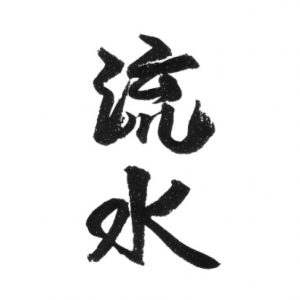There are two concepts in iaijutsu that are related to one another, but have distinct meanings. These are tachi suji and kiru oto. Tachi suji refers to the correct path for a blade to travel in a cut, and kiru oto refers to the whip-like whooshing sound made when a cut is done correctly. The two go hand in hand.
In order for the blade to cut cleanly and correctly it must follow its optimal path. The angle of the blade must be correct in all three dimensions of space, and the ken saki (tip of the blade) must accelerate properly through the arc of the cut. To follow the blade through a cut is to feel the optimal path and give power it, as if from behind. Once the blade is set in motion its own inertia and momentum should inform the optimal path, and the forward wrist extends during the cut to facilitate this. So it is learning to initiate a cut correctly that allows one to target the cut correctly so that it may follow its proper path.
When the blade cuts correctly, kiru oto, the characteristic whip-like whooshing sound, is created. The sharper that sound, the cleaner the path. Learn how to initiate a cut correctly so that you can follow the sword’s preferred path, and listen for this telltale sign.


